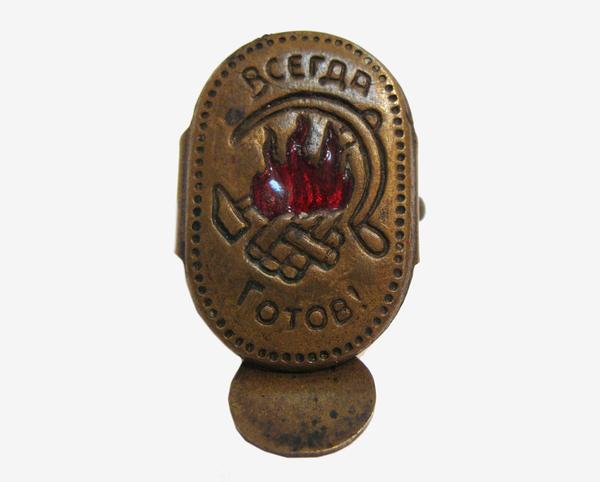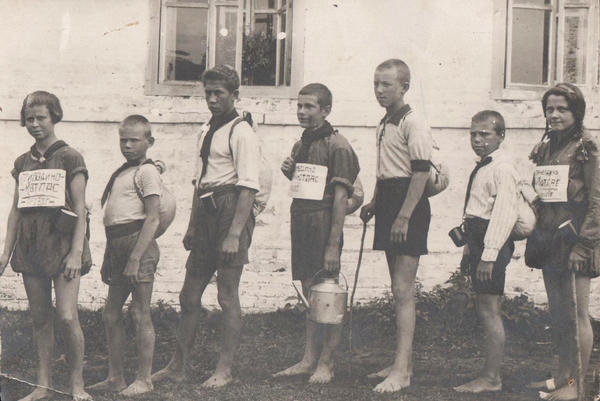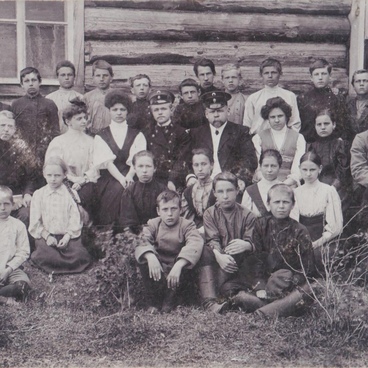The Pioneer tie clip was used to fasten the ends of the Pioneer tie. Made in the USSR at the end of the 1920s in the Leningradsky enamel factory, the clip was constructed of brass and red and black hot enamel. The front side depicts a Pioneer’s fire, a hammer and sickle, the motto of the Soviet Pioneers: “Always ready!” The clip worked very simply: you had to open the fastener lock with your thumb, insert the ends of the tie into the opening, and with your other hand, tighten the clip to the required length and fix it with the fastener.
The more correct name for the clamp is a fibula, from the Latin — “a fastener for clothes that is simultaneously ornamental.” Fibulae were actively used in the scout movement, and most of the attributes of Pioneerism were borrowed from scouts. Clips were used by junior scouts, because at a young age it was not always possible to tie a knot on a neckerchief.
Since its inception, the clamp was considered a prestigious element of the Pioneer uniform and was often given out as a reward to the best students and Pioneer activists. Due to the complexity of their manufacture, they did not become a mass accessory, therefore, ties were traditionally tied with a special knot. The Pioneer badge was widespread as well, and duplicated this same symbolism.
The pioneer clip was saturated with various “encrypted” symbols. The five logs of the fire meant five continents, and three tongues of flame meant the Communist International (Comintern). Together they symbolized the five continents burning in the flames of the Comintern — the world revolution. The hammer and sickle represented the unity of workers and peasants. Fastening a tie with this clip represented the unity of three generations — Communists, Komsomols, and Pioneers. The slogan “Always ready!” Had already been adopted. Thus, the clamp was not only a practical, but also “ideologically correct”.
However, in the late 1930s, unchildish passions flared around this simple attribute of a children’s organization. The clip became the object of spy mania and triggered a whole series of conspiracy theories. In November 1937, rumors circulated among the Moscow Pioneers that the clips for the pioneer ties had hidden initials ‘T’ and ‘Z’, which meant ‘Trotsky’ and ‘Zinóviev.’ The most vigilant Pioneers allegedly saw the profile of Trostsky on them as well. Jewelry began to be eliminated en masse. The clips were produced until 1942 and finally became a thing of the past starting in the 1960s.
The more correct name for the clamp is a fibula, from the Latin — “a fastener for clothes that is simultaneously ornamental.” Fibulae were actively used in the scout movement, and most of the attributes of Pioneerism were borrowed from scouts. Clips were used by junior scouts, because at a young age it was not always possible to tie a knot on a neckerchief.
Since its inception, the clamp was considered a prestigious element of the Pioneer uniform and was often given out as a reward to the best students and Pioneer activists. Due to the complexity of their manufacture, they did not become a mass accessory, therefore, ties were traditionally tied with a special knot. The Pioneer badge was widespread as well, and duplicated this same symbolism.
The pioneer clip was saturated with various “encrypted” symbols. The five logs of the fire meant five continents, and three tongues of flame meant the Communist International (Comintern). Together they symbolized the five continents burning in the flames of the Comintern — the world revolution. The hammer and sickle represented the unity of workers and peasants. Fastening a tie with this clip represented the unity of three generations — Communists, Komsomols, and Pioneers. The slogan “Always ready!” Had already been adopted. Thus, the clamp was not only a practical, but also “ideologically correct”.
However, in the late 1930s, unchildish passions flared around this simple attribute of a children’s organization. The clip became the object of spy mania and triggered a whole series of conspiracy theories. In November 1937, rumors circulated among the Moscow Pioneers that the clips for the pioneer ties had hidden initials ‘T’ and ‘Z’, which meant ‘Trotsky’ and ‘Zinóviev.’ The most vigilant Pioneers allegedly saw the profile of Trostsky on them as well. Jewelry began to be eliminated en masse. The clips were produced until 1942 and finally became a thing of the past starting in the 1960s.




